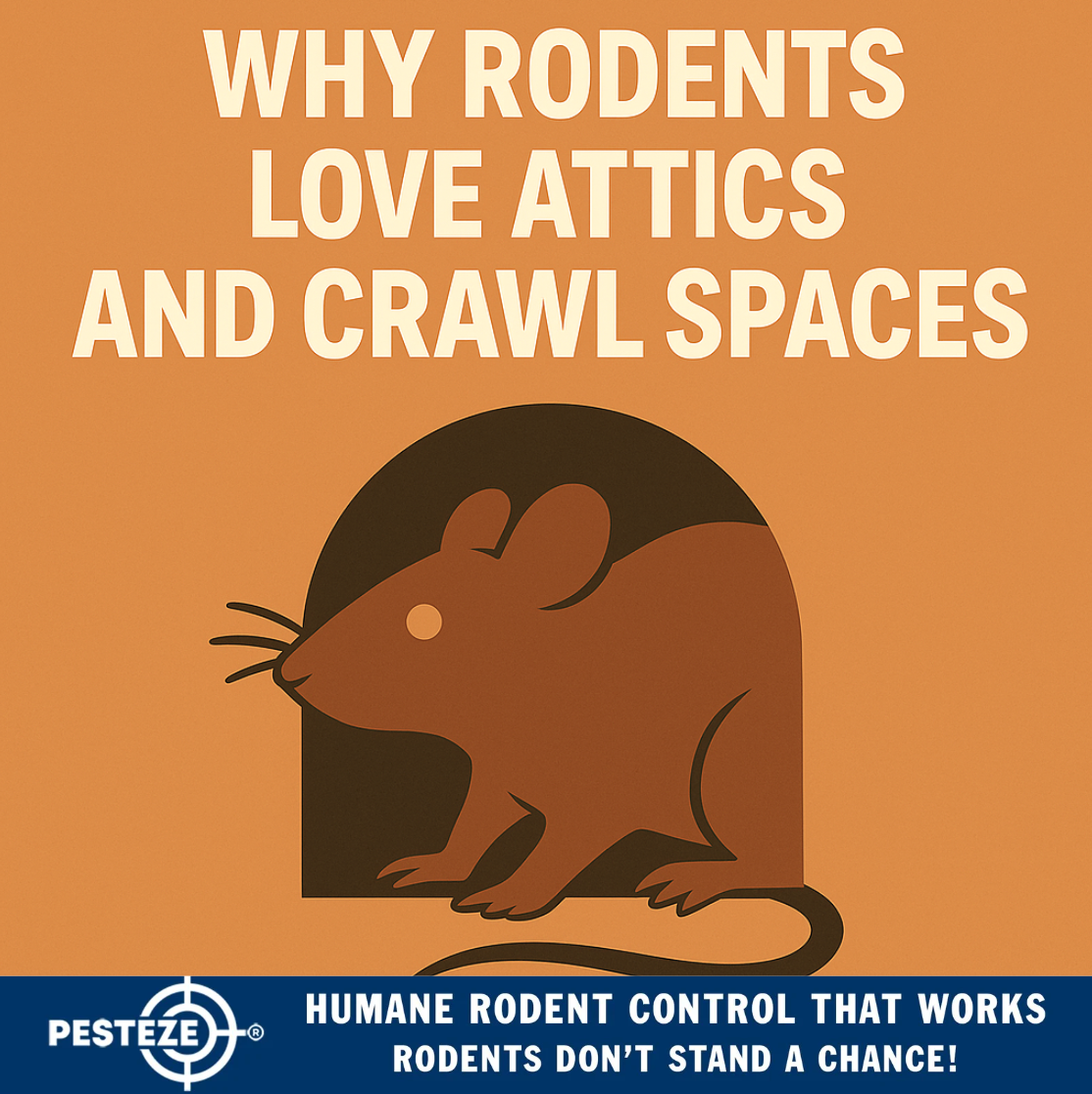WHY RODENTS LOVE ATTICS AND CRAWL SPACES

WHY RODENTS LOVE ATTICS AND CRAWL SPACES
SUMMARY
Attics and crawl spaces offer warmth, shelter, and easy access to food and water sources. This guide explains why rodents flock to these hidden zones and how to keep them out.
FEATURES
-
Warmth & Insulation: Cozy nesting sites inside insulation.
-
Hidden Access Routes: Vents, gaps, and utility lines provide entry.
-
Abundant Nesting Material: Cardboard, fabric, and debris to build nests.
-
Low Human Disturbance: Quiet, dark spaces where rodents feel safe.
-
Moisture & Condensation: Water sources that sustain colonies.
-
Proactive Prevention: Sealing, sanitation, and monitoring strategies.
DESCRIPTION
Rodents are drawn to attics and crawl spaces because these areas give them everything they need to thrive with minimal risk. Attics stay relatively warm year-round, especially around ductwork and chimneys. Insulation offers excellent nesting material and temperature control, letting rodents conserve energy and reproduce efficiently. Crawl spaces, meanwhile, are dark and undisturbed, creating safe corridors between the outdoors and interior rooms.
Entry is usually easier than homeowners realize. Small gaps around rooflines, soffit and gable vents without screens, uncapped chimneys, and holes where utility lines pass through framing act like open doors. In crawl spaces, loose lattice, damaged foundation vents, and poorly sealed sill plates provide similar access. Once inside, rodents follow building edges and joists to establish trails that connect nests to food and water.
Nesting materials are plentiful. In attics, loose insulation, cardboard boxes, old clothing, and stored holiday décor become building supplies. In crawl spaces, leftover construction materials, plastic sheeting, and fallen insulation strips are quickly shredded to line nests. Moisture makes these spaces even more appealing. Condensation on ductwork, minor plumbing leaks, and ground humidity in vented crawl spaces provide rodents with the water they need to survive.
The lack of routine human activity is another major attractant. Because homeowners seldom enter these spaces, early warning signs—droppings, gnaw marks, rub trails, and scratching at night—often go unnoticed. Left unchecked, rodents can chew wiring, contaminate insulation, and spread allergens throughout HVAC systems.
Prevention starts with exclusion. Install ¼-inch hardware cloth on attic and foundation vents, add chimney caps, repair roof flashing, and seal penetrations with steel wool backed by caulk or metal flashing. Reduce attractants by storing items in sealed plastic bins, removing cardboard, and securing loose insulation. Control moisture with vapor barriers, dehumidifiers, or proper venting, and repair any leaks promptly. Finally, monitor activity with traps placed along joists and walls, and inspect quarterly so you can respond before populations expand.
By understanding why attics and crawl spaces are so attractive—and addressing entry points, materials, moisture, and monitoring—you can keep these hidden areas rodent-free and protect your home from damage.
- Saharsh Bansal


Comments 0